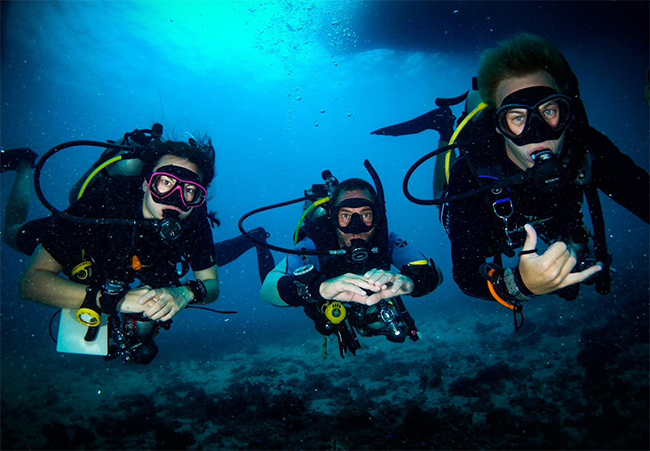This article was written by Vikki Batten and originally published on the TecRec blog on July 2, 2015.
Redundancy is not just the preserve of technical divers, although for most divers technical diving is where they first hear the term. A huge majority of us learn to dive with one cylinder, so where is the redundancy?
My first diving experience was in Africa, and there were no alternate gas sources, just plenty of time spent learning to buddy breathe. My buddy was my redundancy. Of course, alternate second stages are now mandatory equipment for divers with only one cylinder, so that we can help our buddy in an out-of-gas emergency.
Thanks to this, all divers now have a redundant second stage. They also have more than one way to inflate their BCD (oral inflation as well as using gas from the cylinder) and at least two ways to deflate.
It’s easy to understand why a tec diver who has decompression or is diving in an overhead environment needs a redundant gas source; if something goes wrong and you can’t surface, you will need to breathe during the time it takes to surface.
The double cylinder set up has long been the most obvious difference between tec and rec diving, but things are changing fast. Recreational divers are using sidemount, back-mounted doubles and rebreathers, but what is the advantage of redundancy if you’re not a tec diver?
First of all, having more than one cylinder is only a good thing if you are comfortable wearing the equipment and know how to use it. However, just adding extra kit ad hoc is more likely to result in too much task loading than improving your options in an emergency.

Training is vital, because knowing how to manipulate equipment to minimize gas loss in an emergency and access remaining gas must be practiced until you can do it without thinking. In an out-of-gas emergency, poorly learned skills are likely to be lost, so practice, practice, practice.
But, if you have the training and experience, a redundant air source means that you have a second life support system in the event of a gas loss emergency – and that is a very reassuring thing to have, even when there are no problems.
With a redundant gas source, in a gas loss emergency, your first option is to use your redundant gas source. You still have your buddy(ies), of course, but hopefully you won’t need them for anything other than reassurance.
So, before you just sling on an extra cylinder or add another regulator, pop into your PADI Dive Center and ask them about training courses, such as Sidemount Diver, Rebreather and Advanced Rebreather Diver, Self-Reliant Diver, Tec Basics Diver and Tec 40 Diver. Although these courses can be challenging, for many divers diving with redundancy is more comfortable both physically and mentally. Who knows? You may even be tempted by tec diving after all.
Share This